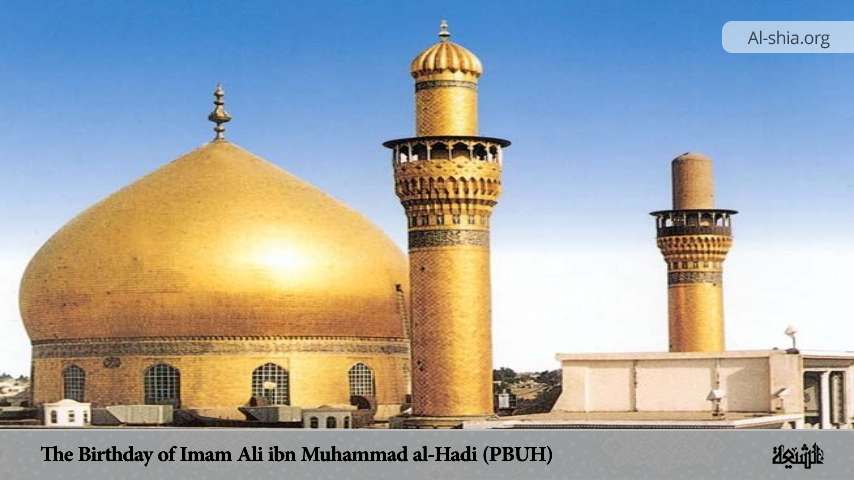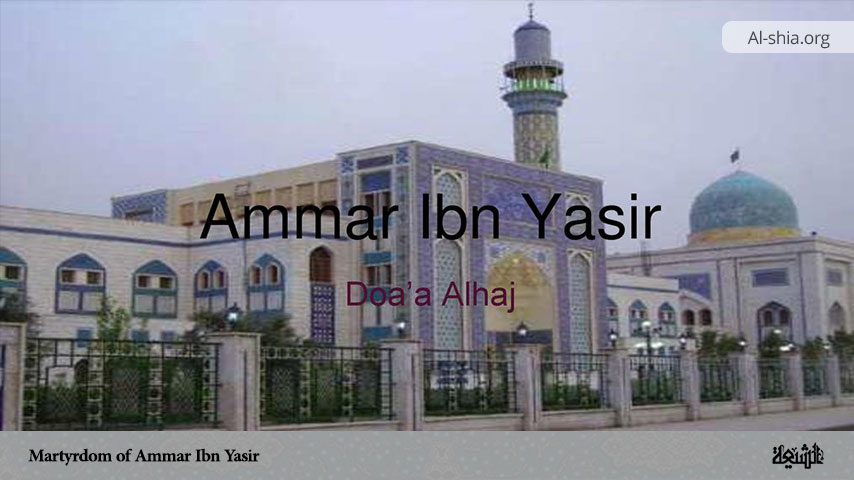Imam Ali Ibn Muhammad al-Hadi (The Guide), also known as al-Naqi (The Pure), is the tenth Imam in the line of the Twelve Imams. His birthday is not merely a historical event but a significant religious occasion observed with reverence and devotion by Shia Muslims. His early life is significant for understanding his subsequent role as a spiritual and political leader. This article delves into his birth, family background, education, and contributions to Islamic theology and jurisprudence, illustrating how his teachings have influenced both his contemporaries and successive generations. By examining the historical and cultural contexts of his birthday celebrations, we will gain a deeper appreciation of his role in shaping Shia identity and religious practices.
Birth and Family Background
Imam Ali al-Hadi was born on Dhul-Hijjah 15, in the year 212 A.H[1] (828 CE) at Surya in the holy city of Medina, which is located in present-day Saudi Arabia. His birth occurred during the reign of the Abbasid Caliphate, a period marked by significant political and religious developments.
His father was the son of Imam Muhammad al-Jawad, the ninth Imam[2], and his mother was Lady Sumana, a noble and pious woman[3]. His lineage traces back to the Prophet Muhammad (PBUHH) through his daughter, Lady Fatima and son-in-law Ali ibn Abi Talib, the first Imam. His ancestry made him a descendant of the Prophet Muhammad (PBUHH), which bestowed upon him a revered status among Shia Muslims. This lineage was a source of both spiritual authority and political contention.
Education and Early Influences
From a young age, Imam al-Hadi exhibited exceptional intellectual and spiritual qualities, which were nurtured by his family and close associates. His education was comprehensive, encompassing various fields of Islamic knowledge and sciences. Imam al-Hadi received his religious education under the guidance of his father, Imam Muhammad al-Jawad[4]. His intellectual upbringing was influenced by the rich scholarly tradition of Medina, a city renowned for its religious and academic heritage.
Alongside his formal education, Imam al-Hadi received rigorous moral and ethical training from his parents. His upbringing emphasized piety, integrity, and a commitment to justice, qualities that later defined his leadership.
Ascension to the Imamate
Imam al-Hadi assumed the mantle of Imamate at a young age, following the martyrdom of his father in 835 CE. He was only about six or seven years[5] old when he became the Imam, yet he demonstrated maturity and wisdom far beyond his years. Despite his young age, Imam al-Hadi garnered immense respect and support from the Shia community. His followers recognized his legitimate authority and divine guidance, which helped him navigate the complex political landscape[6].
However, his early ascension to the Imamate presented significant challenges. The Abbasid Caliphate, under the rule of Caliph al-Mu’tasim, was vigilant and often oppressive towards the Shia Imams due to their influence and the loyalty they commanded among the people.
Significance of His Birthday
The birthday of Imam Ali Ibn Muhammad al-Hadi is an important occasion marked with reverence and celebration. The birthday of Imam al-Hadi is a time for Shia Muslims to reflect on his life, teachings, and contributions to Islamic thought and spirituality. The date of his birth is significant in the Islamic calendar, particularly for Shia Muslims, who commemorate it with various religious and cultural activities. His birthday is an occasion for:
- Faith Reinforcement: The celebrations provide an opportunity for believers to renew their faith and commitment to Islamic principles.
- Spiritual Reflection: Engaging in religious activities allows individuals to reflect on the spiritual teachings of Imam al-Hadi and apply them to their own lives.
- Celebrating His Legacy: The Followers of Ahl al-Bayt remember and honour Imam al-Hadi’s contributions to the preservation and dissemination of Islamic knowledge and his steadfast leadership under difficult circumstances.
- Strengthening Community Bonds: The celebration serves as an opportunity for the Shia community to come together, reinforce their faith, and share in collective remembrance and devotion. Shared activities foster a sense of unity and belonging.
- Educational Value: Lectures, storytelling, and other educational activities ensure that the teachings and legacy of Imam al-Hadi are passed down to future generations.
- Tradition Maintenance: The celebrations help preserve cultural traditions and practices associated with Shia Islam, ensuring that they are kept alive and vibrant.
- Cultural Identity: Participating in these celebrations reinforces cultural identity and pride among Shia Muslims.
Celebration of His Birthday
The birthday of Imam Ali Ibn Muhammad al-Hadi is a significant occasion for Shia Muslims, marked annually with various religious and cultural activities. These celebrations honour his life, teachings, and contributions to Islamic thought and spirituality.
However, how Imam al-Hadi’s birthday is celebrated can vary depending on local traditions and cultural practices. However, several common elements can be observed in Shia communities worldwide.
- Religious Gatherings: Mosques and religious centres hold special gatherings where scholars and clerics recount the life and teachings of Imam al-Hadi. These gatherings often include recitations of the Qur’an, Hadith, and poetry in honour of the Imam. The recitation of the Quran is a central part of the celebrations, emphasizing the spiritual aspect of the occasion.
- Processions and Public Parades: In regions with significant Shia populations, public processions are organized where participants march while chanting praises and slogans in honour of the Imam. These processions often feature banners and flags with religious inscriptions.
- Charitable Activities: Many Shia Muslims engage in acts of charity, such as feeding the poor and donating to those in need, as a way of honouring Imam al-Hadi’s commitment to justice and compassion.
- Pilgrimage to Samarra: Many Shia Muslims, particularly those in Iraq visit the shrine of Imam al-Hadi in Samarra.
- Social Services: Many Shia organizations engage in social service activities, assisting the poor and organizing health camps.
- Festive Meals: Communal meals, known as Nazr, are prepared and distributed. This is a time for the community to come together and share in the joy of the celebration.
- Cultural Activities: Reciting poetry and nasheed (Islamic songs) in praise of Imam al-Hadi is a popular cultural activity. These recitations often highlight his virtues and achievements.
- Storytelling: Narrating stories from the Imam’s life serves to educate the younger generation about his significance and the lessons they can learn from his example.
His Teachings and Legacy
Imam Ali ibn Muhammad al-Hadi, revered as the tenth Imam in Twelver Shia Islam, left behind a legacy of profound teachings and wisdom that continue to resonate with his followers. His teachings encompassed a wide range of spiritual, ethical, and moral guidance aimed at nurturing the spiritual growth and well-being of the Shia community. Some of the key teachings and themes that characterize Imam al-Hadi’s legacy include:
- Knowledge and Wisdom: Imam al-Hadi emphasized the importance of seeking knowledge and wisdom as essential tools for spiritual growth and enlightenment. His teachings underscored the significance of acquiring knowledge not only as a means of intellectual development but also as a pathway to deepen one’s faith and connection to God.
- Piety and Devotion: Central to Imam al-Hadi’s teachings was the emphasis on piety, devotion, and sincere worship of God. His teachings encouraged followers to cultivate a strong spiritual connection through acts of worship, prayer, and adherence to Islamic principles, embodying a life of righteousness and ethical conduct.
- Justice and Compassion: The Imam’s teachings highlighted the virtues of justice, compassion, and empathy towards others. He advocated for upholding justice in all dealings, showing kindness and compassion to the marginalized and oppressed, and fostering a sense of community and unity among believers.
- Resilience and Patience: Imam al-Hadi’s legacy reflects a spirit of resilience and patience in the face of trials and tribulations. His teachings emphasized the importance of steadfastness, patience, and trust in God’s divine wisdom during times of adversity, inspiring followers to persevere with faith and humility.
- Spiritual Enlightenment: The Imam’s teachings aimed at guiding individuals towards spiritual enlightenment and inner purification. His spiritual insights and moral guidance provided a roadmap for followers to attain spiritual growth, self-reflection, and alignment with the divine will.
Conclusion
The birthday anniversary of Imam Ali Ibn Muhammad al-Hadi, the tenth Shia Imam, serves as a profound moment of reflection and celebration for millions of Shia Muslims worldwide. His birthday is not merely a historical event but a significant religious occasion observed with reverence and devotion by Shia Muslims. Imam al-Hadi is known for his wisdom, piety, and steadfastness in the face of adversity and his teachings continue to inspire and guide the Shia community. His legacy of justice, knowledge, and devotion remains a cornerstone of Shia identity, making his birthday an essential time for both remembrance and reaffirmation of faith.
The life, teachings, and legacy of Imam al-Hadi have had a profound impact on Islamic thought, spirituality, and the Shia community. Throughout his lifetime, Imam al-Hadi made significant theological, intellectual, and leadership contributions, leaving a lasting imprint on Shia Islam. This occasion not only honours his life and legacy but also underscores his contributions to Islamic thought, spirituality, and leadership.
References
[1] . Shaykh Mufid, Kitab al-Irshad, p. 465
[2] . Baqeer Shareef Al-Qurashi, The life of Imam Ali Al-Hadi: Study and Analysis, p. 7
[3] . Shaykh Mufid, al-Irshad, p. 465.
[4] . Baqeer Shareef Al-Qurashi, The life of Imam Ali Al-Hadi: Study and Analysis, pp. 11-12.
[5] . WOFIS, A brief history of the fourteen Infallibles, p. 161.
[6] . ‘Atarudi, ‘Aziz Allah, Musnad al-Imam al-Hadi (a), p. 20


















